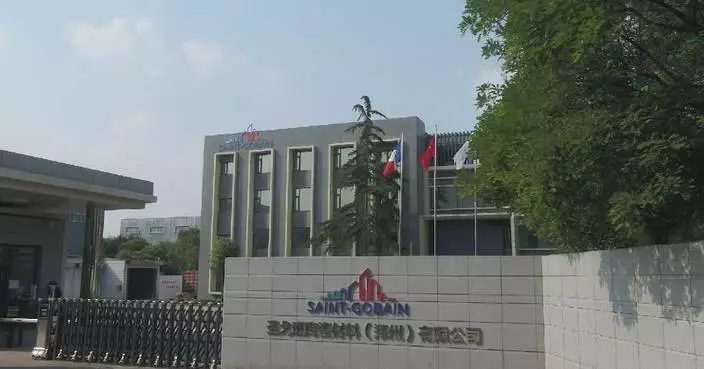The BRICS New Development Bank (NDB)'s first non-sovereign loan in China is driving green transformation and supporting sustainable infrastructure development in Huzhou, a green pilot city in east China's Zhejiang Province, while fostering economic prosperity for local businesses.
The NDB loan enables the bank to provide financing to local companies for projects such as rooftop solar power, smart parking and reservoir renovation.
Zhejiang Anji Construction Holding Group, a local company that manages a reservoir in the green pilot city, has gained considerable revenue through selling sand and soil as part of a project that dramatically cleaned up the reservoir's water supply, according to Huang Zhirong, Director of the firm's Finance Management Department.
"Nearly half of our total revenue comes from this project. The area was initially filled with mud and household waste, all of which has now been cleared away. After the dredging process, we would sell the extracted sand and gravel. Second was the sale of raw water and third was renting the reservoir to nearby residents for their operations. Last year, the NDB conducted on-site inspections of our project, and I sensed that they place a greater emphasis on achieving sustainable development following our clearing project, which distinguishes them from other banks," he said.
The loan project Huang referred to is the first non-sovereign loan -- a loan approved without the guarantee of a local or national government -- approved in China by the NDB, in partnership with the Bank of Huzhou.
"The loan is channeled through the Bank of Huzhou, as a financial intermediary to fund multiple projects, taking advantage of its local client resources and green finance expertise to expand development impact with a broader scope of beneficiaries. It is the first city commercial bank to establish a green finance system and set green credit evaluation standards. We were both looking for each other," explained Han Bin, Director General of the Private Sector Department at the NDB.
Under the agreement, the NDB provided a loan of 50 million U.S. dollars equivalent in Chinese yuan for financing a range of sustainable infrastructure development projects in Zhejiang.
"Throughout the project deployment, the NDB funded 80 percent of the total costs, while we contributed the remaining 20 percent. They provided us with an amount equivalent to 50 million U.S. dollars in Chinese yuan, which is approximately 350 million yuan. Nearly 90 percent of this funding has been invested so far. Our cooperation with the NDB has focused more on the green transformation of infrastructure. This includes the consolidation of water conservancy facilities and enhancement of their safety, the improvement of logistics and transportation networks, and the adoption of new energy sources," said Fang Xiaying, general manager of the Green Finance Department at the Bank of Huzhou. Some green projects are not only self-sustaining but also enable traditional companies to engage in green transformations. A notable example is a project to install distributed photovoltaic panels on factory rooftops.
"Generally, the electricity generated from our investment should primarily be consumed by the enterprises themselves. We have approximately 150 such power stations in Huzhou, generating around 100 million kWh of electricity annually through photovoltaics, which is equivalent to a small power plant," said Zheng Yu, Chairman of Zhejiang Runyu Optoelectronic Technology.
Zheng added that by the end of the year, these enterprises could receive a rental income of some 50,000 yuan (about 7,000 U.S. dollars).
He also explained that these solar panels have a lifespan of around 25 years. After an eight-year loan repayment period, the sale of green electricity can become significantly more profitable. This green transformation is set to benefit all parties involved.

NDB's first non-sovereign loan to China supports green projects in lakeside city










